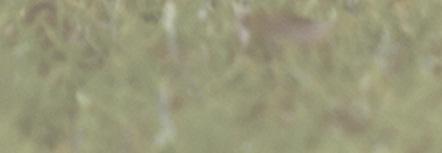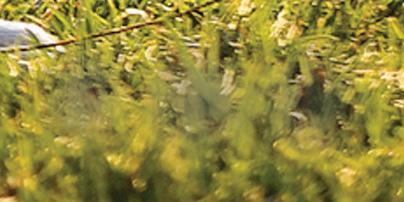

Welcome to this month's issue of DQ Magazine, where we continue our commitment to bringing you the best in canine care, health, and lifestyle. As the seasons change, so do the needs and interests of our furry friends, and we’re excited to present a diverse array of articles that cater to every aspect of your dog's well-being.
Our breed profile this month shines a spotlight on the German Shepherd. Known for their intelligence, loyalty, and versatility, German Shepherds are a beloved breed worldwide. Learn about their history, characteristics, and why they make excellent companions and working dogs.
In a fun and mythological twist, we then feature an article on Cerberus, the legendary three-headed dog from Greek mythology. It's a fascinating read that combines history, culture, and a touch of fantasy.
As we move into the colder months, we also discuss the benefits of dog jackets. Keeping your dog warm and comfortable is crucial, and we provide insights into
and the DQ team
Dr Lizzie Harrison | Editor
choosing the right jacket for your dog's needs.
We also explore the art of canine photography. Whether you're a professional photographer or just love snapping pictures of your pup, our tips and tricks will help you capture stunning images that showcase your dog's unique personality.
This month, we delve into some critical health topics, starting with a comprehensive look at acral lick granulomas. This persistent condition can be both frustrating and concerning for dog owners, but our experts provide valuable insights into causes, treatments, and preventive measures. Canine anxiety is another health focus this month. We offer guidance on recognising signs of anxiety in your dog and effective strategies to help them feel more secure and relaxed.
We hope you enjoy this issue and find it both informative and enjoyable. As always, we're here to support you in providing the best care for your canine companions. Happy reading!
DQ | 8C 3 Designer: Anne Royden-Turner
Lizzie
xxx
DIGITAL ISSUE 9C | 2024
CONTENTS
German Shepherds
Unmatched loyalty and versatility
Cerberus
The ultimate guardian from Greek Mythology
11 tips
For taking the best dog portraits
The essential guide to dog jackets
Function, fashion, and fit
Acral lick granulomas
Causes, symptoms, and treatment
Managing anxiety
Effective strategies for a calmer canine
DIY dog grooming
Mastering the art of clipping your dog at home
Ask DQ
Your questions answered
Products we love
DQ | 8C 4
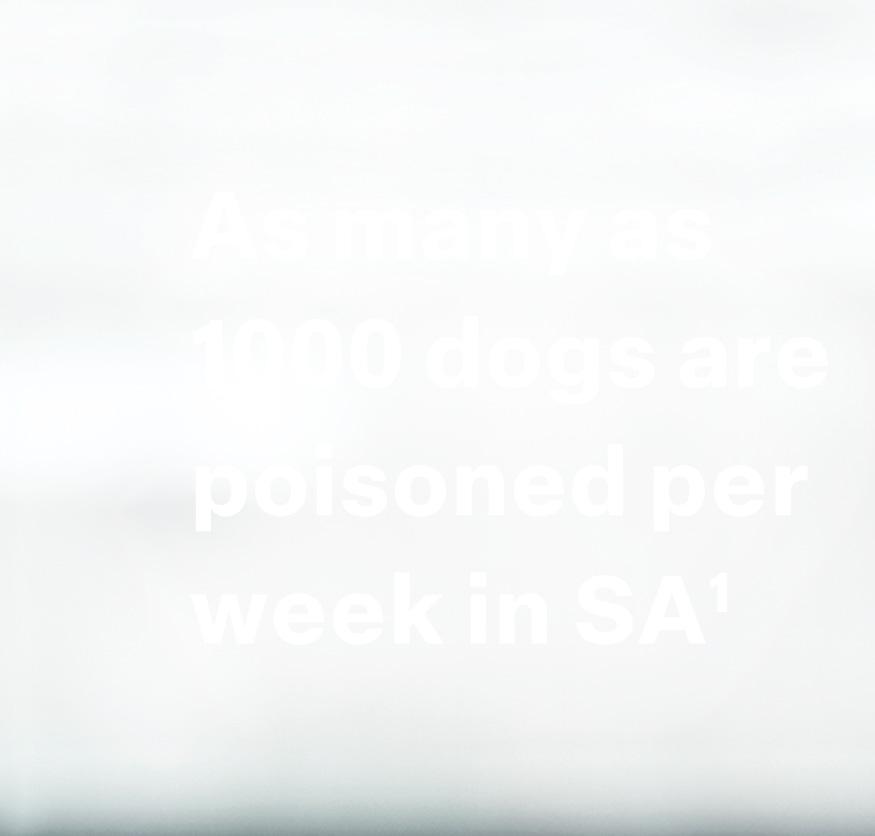
































































































DQ | 8C 6 BREED PROFILE
German Shepherds
UNMATCHED LOYALTY AND VERSATILITY
DQ | 8C 7
BREED PROFILE
The German Shepherd, renowned for its courage, loyalty, and guarding instincts, stands as one of the most popular and recognisable breeds of dog worldwide. Originating from Germany in the late 19th century, these dogs were initially bred for herding sheep but quickly became a favourite in various roles due to their intelligence, strength, and adaptability.

DQ | 8C 8
BREED PROFILE

THE REMARKABLE ROLES OF GERMAN SHEPHERDS DURING WORLD WAR I
The breed's involvement in the war highlighted its potential beyond traditional herding tasks, leading to its recognition and adoption in various roles across different sectors. Here are some of the key functions German Shepherds served in World War I:
1. Message delivery: German Shepherds were trained to deliver messages between groups on the battlefield. Their speed and ability to navigate through dangerous and complex environments made them reliable couriers, able to reach destinations that were inaccessible or too risky for human soldiers.
2. Sentry duty: The dogs were used as sentries or guards at military sites. Their acute senses, particularly their ability to hear and smell over great distances, enabled them to detect enemy movements and alert soldiers to potential threats, often before they were visible.
3. Search and Rescue: These dogs were used to locate wounded soldiers on battlefields. They could navigate through bombed-out areas and trenches to find and aid injured personnel, proving invaluable in saving lives by speeding up medical assistance.
4. Carrying supplies: German Shepherds were also used to carry supplies, such as medical kits or ammunition, to front lines during combat, often in situations where human movement would draw too much attention.
5. Moral support: Beyond their physical contributions, German Shepherds served as companions and provided emotional support to troops, boosting morale in the harsh conditions of trench warfare.
The effectiveness of German Shepherds in these roles during World War I significantly raised their profile and led to their increased use in police and military work in the post-war years. Their heroic contributions during the war also helped cement their reputation as capable and dependable working dogs.

DQ | 8C 10
BREED PROFILE

DQ | 8C 11 BREED PROFILE

PHYSICAL CHARACTERISTICS
German Shepherds are large dogs, typically weighing between 22-40 kg, with males generally larger than females. They possess a noble, elongated, slightly wedge-shaped head with keen, almond-shaped eyes that
convey a look of intelligence and alertness. Their ears are large and stand erect when they are alert. The breed features a double coat, which can be either medium or long, with colours ranging from black and tan to sable or all black.
DQ | 8C 12 BREED PROFILE

DQ | 8C 13 BREED PROFILE

WHAT IS THE DIFFERENCE BETWEEN A GERMAN SHEPHERD AND AN ALSATION?
The terms ‘German Shepherd’ and ‘Alsatian’ refer to the same breed of dog. The difference in the names stems from historical and geopolitical influences rather than differences in the breed itself.
BACKGROUND
• German Shepherd: This breed was originally developed in Germany in the late 19th century by Max von Stephanitz, who wanted to create an ideal working dog. The breed quickly became popular in Germany and then worldwide for its intelligence, strength, and versatility.
During and after World War I, anti-German sentiment was strong in many countries, including Britain and parts of the Allied nations. To avoid the negative connotations associated with the word ‘German,’ the UK began referring to the German Shepherd as the ‘Alsatian Wolf Dog,’ after the Alsace region on the France-Germany border. Over time, the ‘Wolf Dog’ part was dropped, and the breed was simply called ‘Alsatian.’
MODERN USAGE:
In 1977, the breed's name was officially changed back to German Shepherd in the UK, aligning with international naming conventions. However, some people in the UK and other parts of the world might still use the term ‘Alsatian.’
In summary, there is no difference between a German Shepherd and an Alsatian; they are the same breed with different names due to historical reasons.
DQ | 8C 14 BREED PROFILE
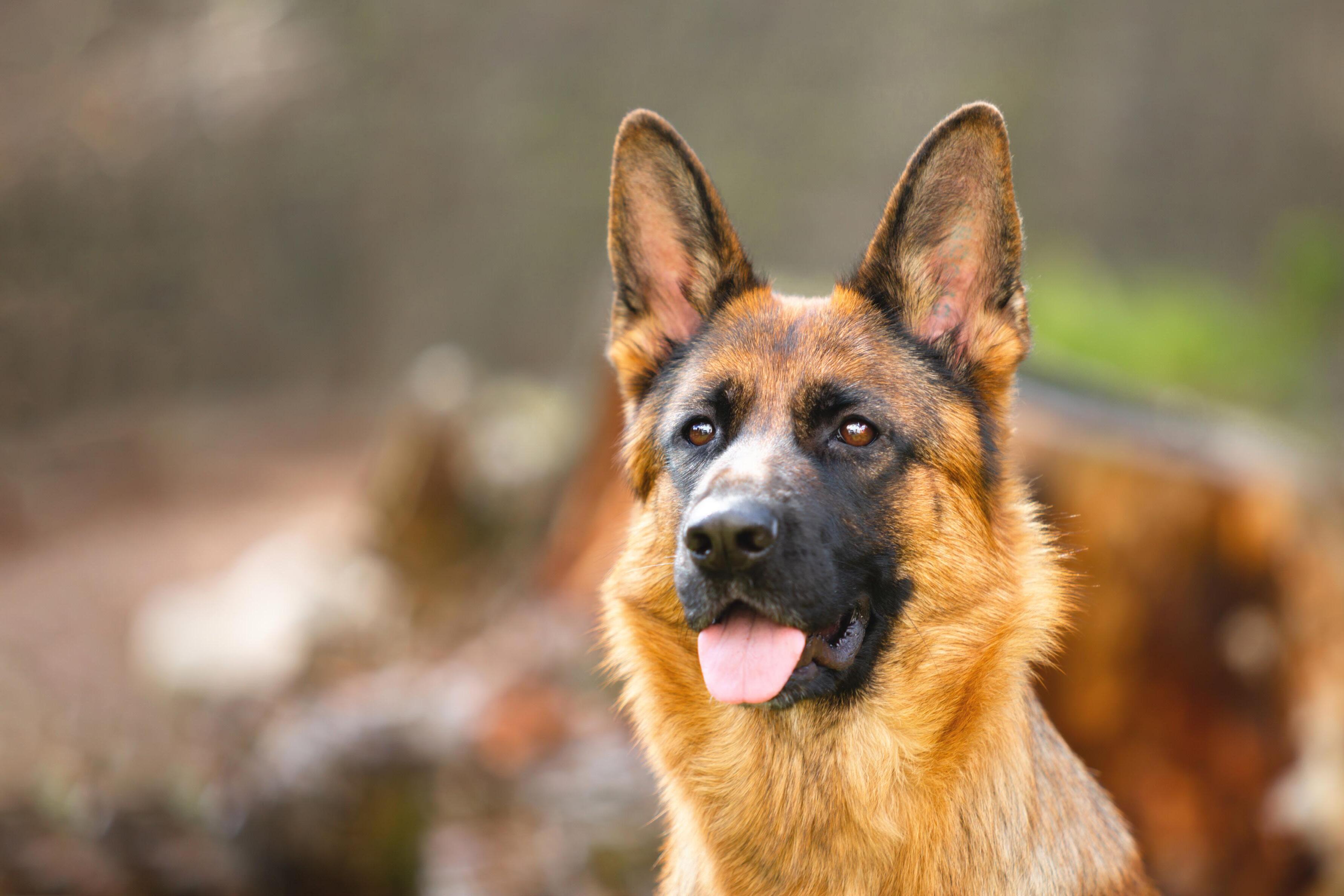
DQ | 8C 15 BREED PROFILE

TEMPERAMENT AND PERSONALITY
This breed is best known for its confidence, fearlessness, and loyalty. German Shepherds are fiercely protective of their families and can be wary of strangers, making them excellent guard dogs. However, they are also known for their kind and loving nature, especially towards children in their family. They are eager to please and highly trainable, thriving on purposeful activity and mental stimulation.
DQ | 8C 16
BREED PROFILE

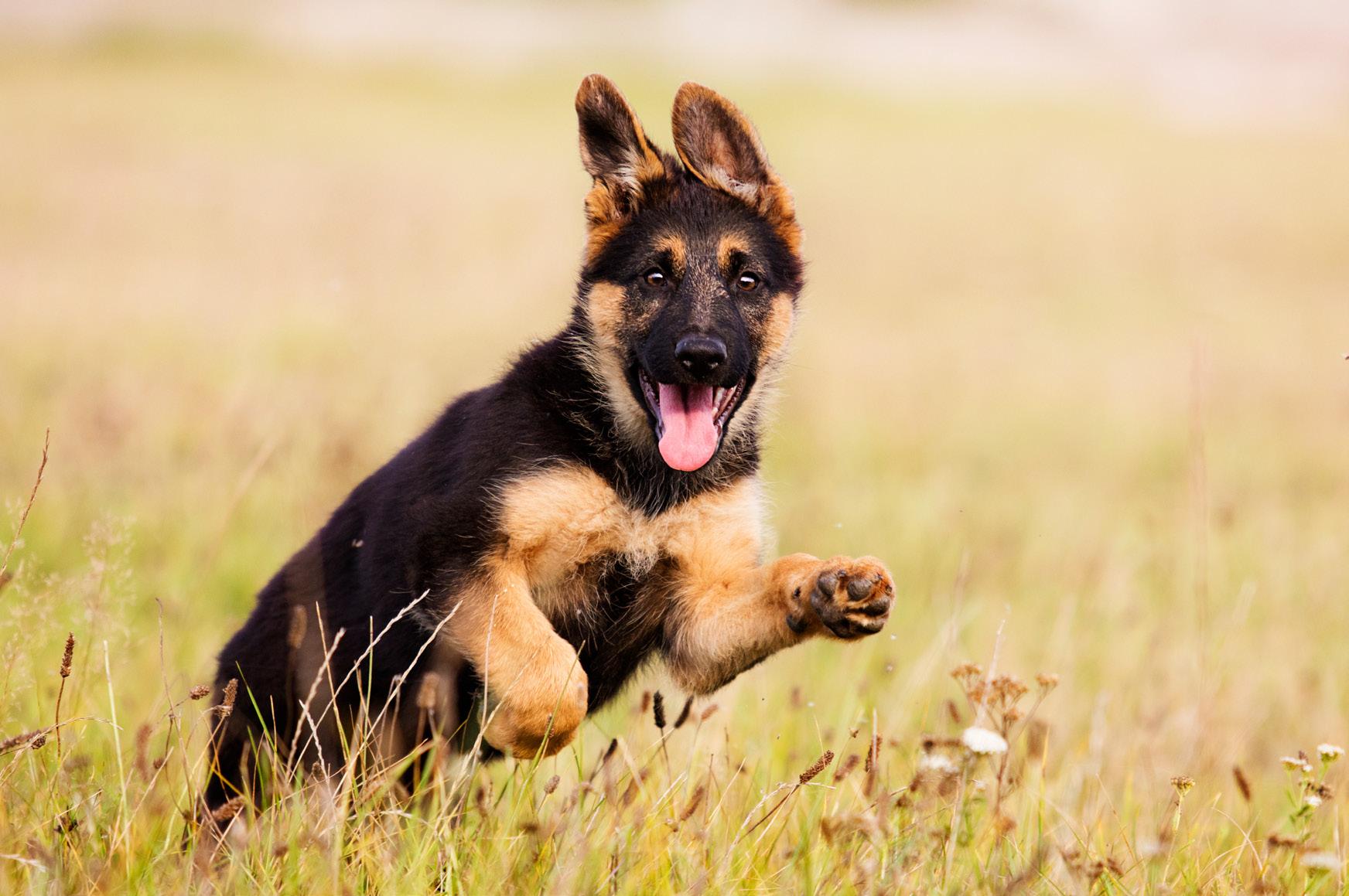
TRAINING AND EXERCISE
German Shepherds require regular exercise and mental engagement to remain healthy and happy. They excel in various canine sports, including agility, tracking, and obedience, and are famously used as police and military dogs due to their trainable nature and physical prowess. Early socialisation and consistent, positive training sessions are crucial for raising a well-adjusted dog.
HEALTH CONSIDERATIONS
Generally healthy, German Shepherds can be prone to certain genetic conditions such as hip and elbow dysplasia, which are common in larger breeds. Regular vet check-ups, a wellbalanced diet, and maintaining an appropriate weight can help manage these risks. They typically have a lifespan of about 10 to 14 years.
DQ | 8C 17 BREED PROFILE
GROOMING NEEDS
Their double coat sheds year-round and more heavily during the spring and autumn. Regular brushing, at least a few times a week, is necessary to help manage shedding and keep their coat healthy. They also require basic grooming routines like nail trimming, ear cleaning, and dental care to prevent common issues.
ROLE IN SOCIETY
Beyond their role as companions, German Shepherds serve in various prestigious capacities. They are prevalent in work as service dogs, in search and rescue missions, and in military and police roles worldwide. Their intelligence and training ability make them an irreplaceable asset in these fields.

DQ | 8C 18
BREED PROFILE
FAMOUS GERMAN SHEPHERDS
German Shepherds have gained fame in various fields, from entertainment to military service. Here are some of the most famous German Shepherds:
1. Rin Tin Tin: Perhaps the most famous German Shepherd, Rin Tin Tin was rescued from a World War I battlefield by an American soldier, Lee Duncan. He went on to star in many films and is credited with popularising the breed in America. His legacy continues to be celebrated in film and television.
2. Strongheart: Another early canine film star, Strongheart starred in several movies and helped establish the German Shepherd as a charismatic and intelligent breed onscreen.
3. Chips: A decorated war hero, Chips served as a sentry dog for the U.S. Army during World War II. He is known for his heroic actions during the invasion of Sicily, where he helped capture an enemy machine-gun nest. He was awarded the Silver Star and Purple Heart, which were later revoked due to policy against awarding military decorations to animals.
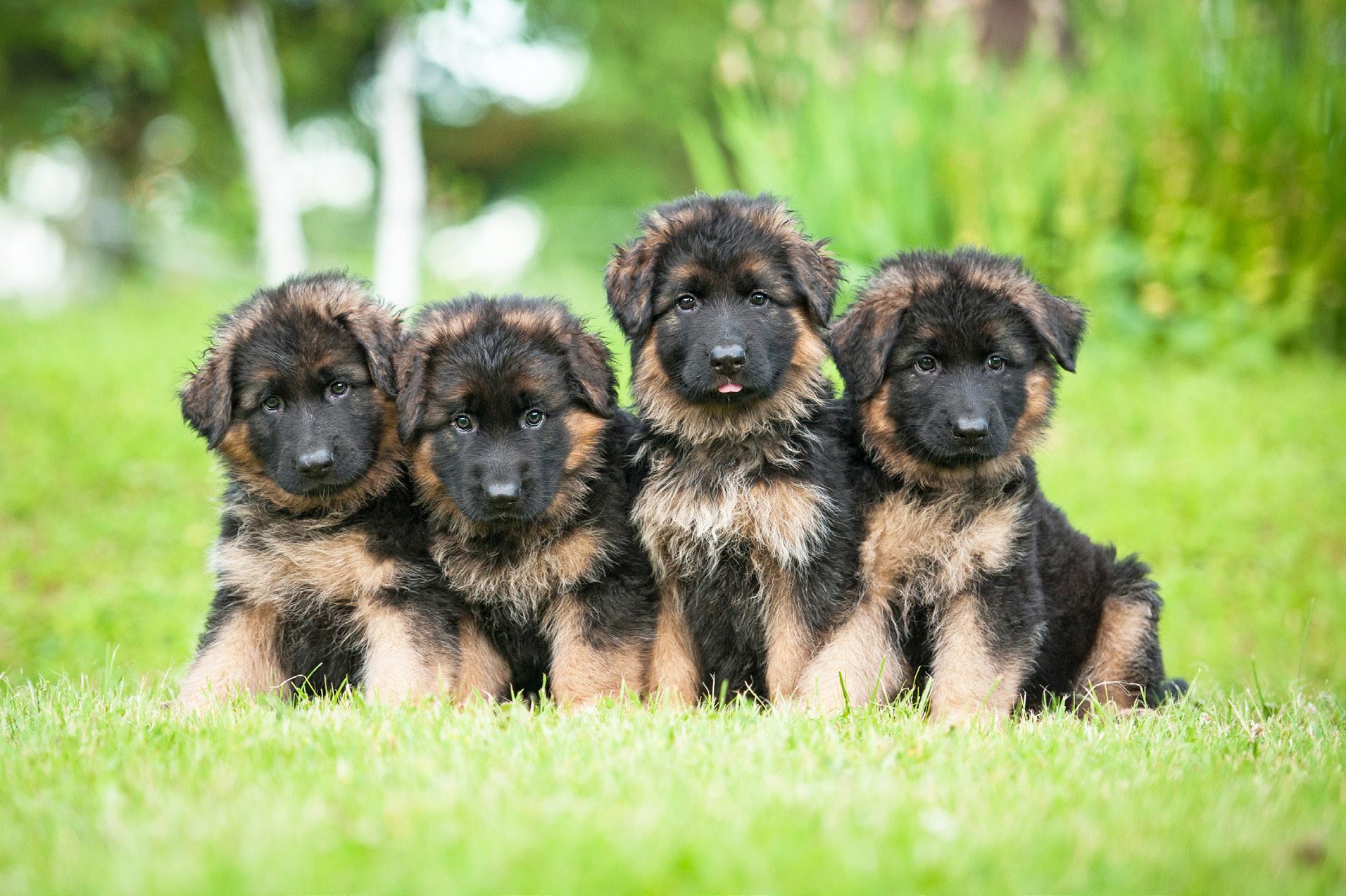
DQ | 8C 19 BREED PROFILE

4. Appollo: Serving with the K-9 unit of the New York Police Department, Appollo was one of the first search and rescue dogs to arrive at the World Trade Centre site on September 11, 2001. For his bravery, he received the Dickin Medal, which is the highest award for valour an animal can receive in military conflict.
5. Capitan: Known for his incredible loyalty, Capitan is a German Shepherd who spent six years guarding his owner’s grave in Argentina. His story is a touching example of the breed's loyalty and emotional depth.
These German Shepherds have not only demonstrated the capabilities and character of the breed but also have endeared themselves to people around the world through their remarkable stories of bravery, loyalty, and charm.
DQ | 8C 20
BREED PROFILE

CONCLUSION
The German Shepherd is a breed of noble character and versatility. Ideal for active households that can accommodate their exercise and mental stimulation needs, they are not just pets but lifelong companions and protectors. Their
enduring loyalty and courage make them a beloved breed for all who have the pleasure of their company. Whether as a family pet, a working dog, or both, the German Shepherd excels in every role it is given, truly embodying the title of ‘man's best friend.’
DQ | 8C 21 BREED PROFILE
Cerberus THEULTIMATEGUARDIAN FROM GREEKMYTHOLOGY
In the pages of a dog magazine, where tales of loyalty and bravery abound, the story of Cerberus—the formidable guardian of the underworld in Greek mythology—captures a darker yet fascinating side of canine lore. Known for his fearsome presence and daunting task, Cerberus has been a symbol of ultimate guardianship for millennia.
DQ | 8C 22 DOGS IN HISTORY

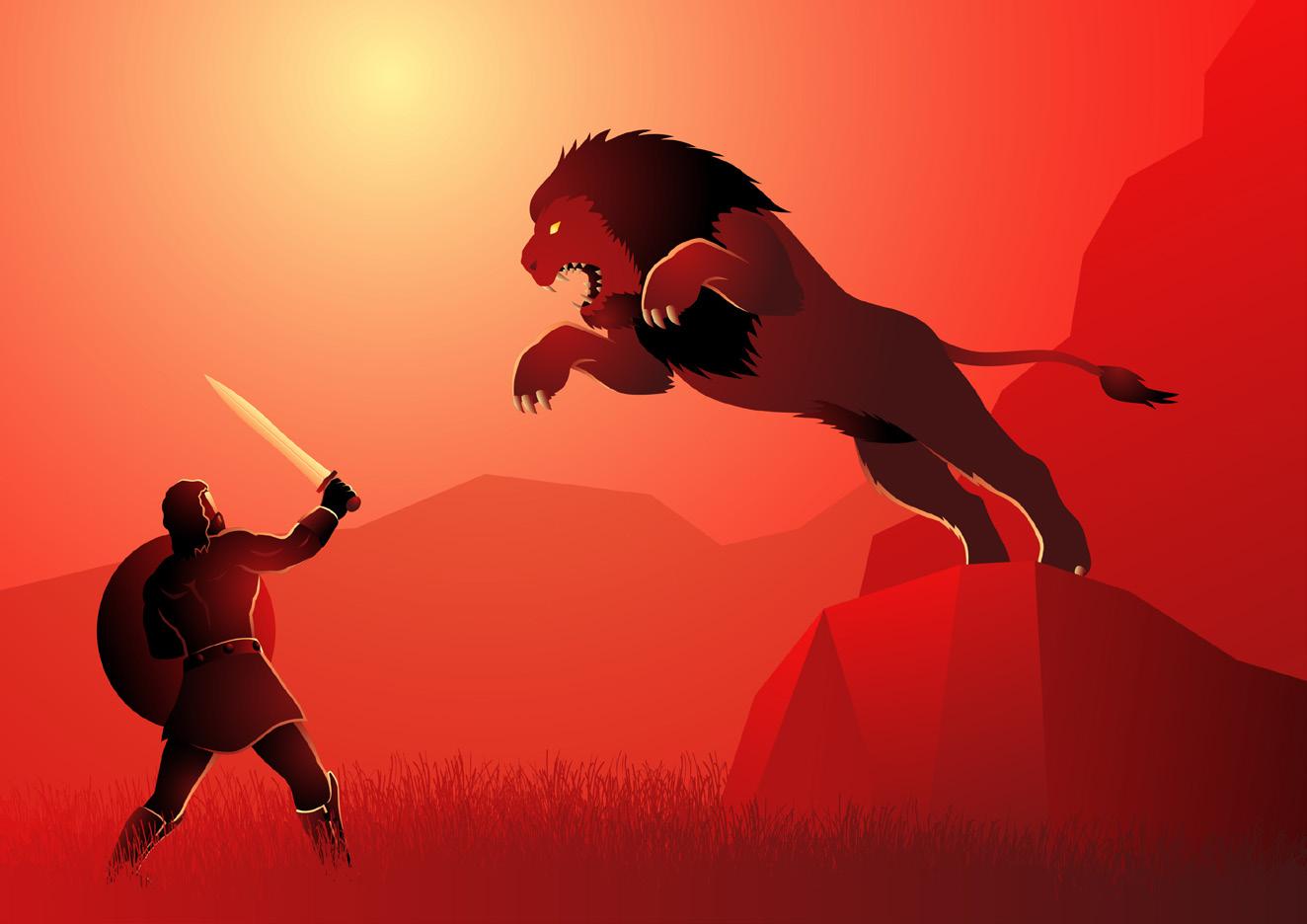
ORIGINS OF A MYTHICAL SENTINEL
Cerberus, often depicted with three heads, was said to be the offspring of Echidna, a creature part woman and part serpent, and Typhon, a massive serpentine giant. This lineage placed Cerberus among a notorious family of monsters, including the Hydra, the Chimera,
and the Nemean Lion. According to the myths, Cerberus' birth destined him to be a sentinel, guarding the gates of Hades to prevent the dead from escaping and the living from entering without permission.
DQ | 8C 23 DOGS IN HISTORY
The Hydra
The Nemean Lion
A TRI-HEADED TERROR
The iconic three heads of Cerberus are interpreted by some as representing the past, the present, and the future, embodying the full spectrum of life and time, which all who enter the underworld must relinquish. Alternative interpretations suggest they symbolise birth, youth, and old age. Further enhancing his daunting appearance, Cerberus is sometimes described as having a serpent for a tail and multiple snakes protruding from parts of his body, enhancing his connection to the chthonic and the terrifying.
CERBERUS IN MYTHOLOGY
The most renowned tale of Cerberus in Greek mythology involves his encounter with Hercules (Heracles in Greek), who faced the daunting task of capturing Cerberus as the final labour assigned to him. Hercules' task was to capture the beast without using weapons, a testament to his strength and bravery. After wrestling Cerberus and subduing him with sheer force, Hercules brought him to the surface world. This act not only completed his labours but also showcased Hercules' heroic capabilities, as he managed to handle the beast and yet respect the natural order by returning Cerberus to his post thereafter.
DQ | 8C 24 DOGS IN HISTORY

SYMBOLISM AND LEGACY
For readers of our dog magazine, Cerberus might symbolise the ultimate guardian—fierce, unyielding, and entirely devoted to his duty. His story resonates with the protective instincts of many dogs we know and love, though thankfully in the less terrifying form of our own pets! Cerberus' enduring presence in art and literature serves as a reminder of the protective and boundary-keeping roles dogs have played throughout history.
DQ | 8C 25 DOGS IN HISTORY
11
TIPS
FOR TAKING THE BEST DOG PORTRAITS
Photographing dogs can be as challenging as it is rewarding, especially when aiming to capture the essence of their personality in a single snapshot. Whether you're a professional pet photographer or a dog owner with a smartphone, these tips will help you take stunning, expressive portraits of your canine companions.
DQ | 8C 26 DOGS AT HOME
ONE
KNOW YOUR SUBJECT
Understanding your dog's personality and behaviour is crucial. Some dogs are full of energy and constantly on the move, while others are more sedate or shy. Use this knowledge to anticipate their movements and capture them in a natural state. For instance, if you have an energetic puppy, you might capture the best images while they are playing or after they've tired themselves out a bit.
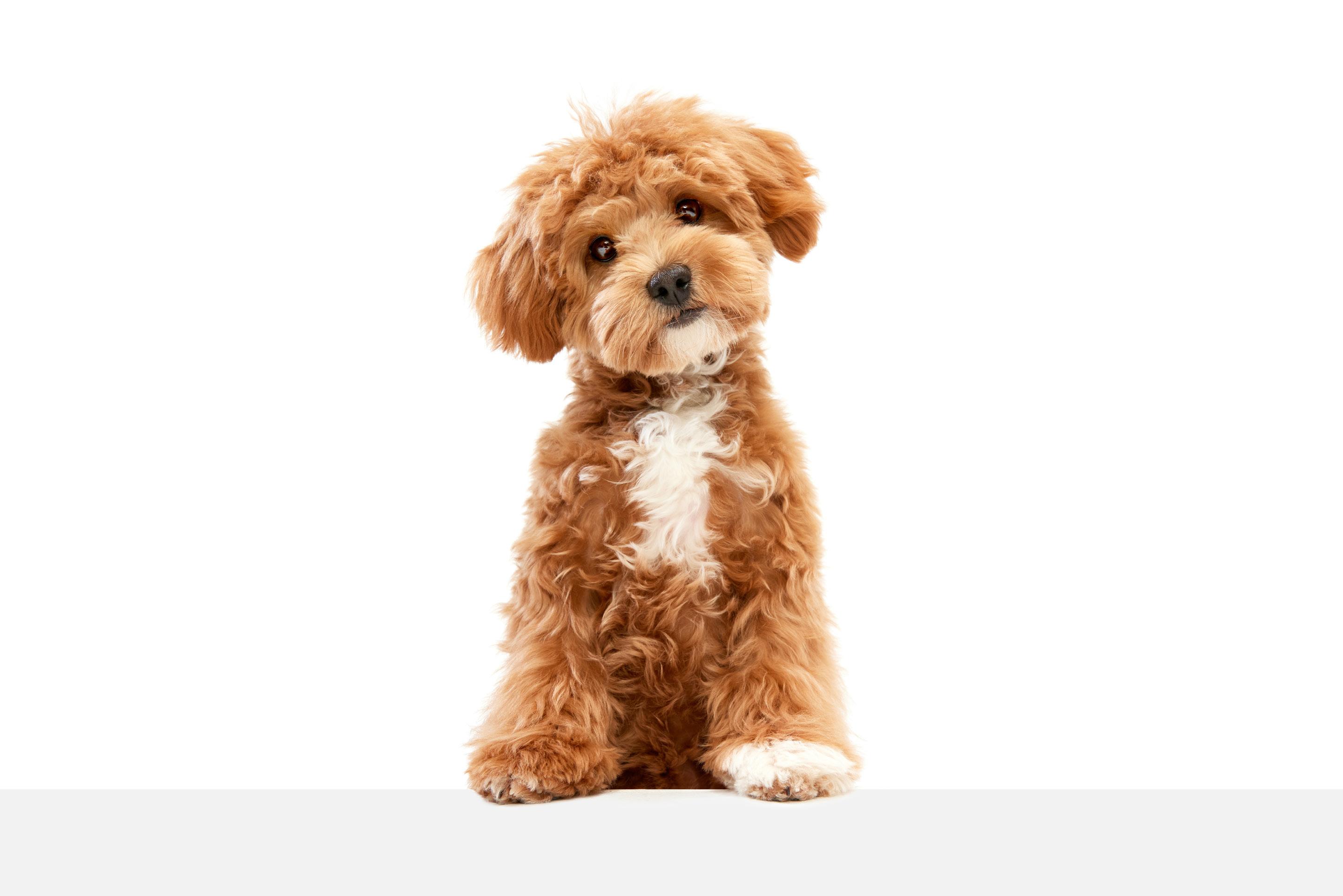
DQ | 8C 27 DOGS AT HOME
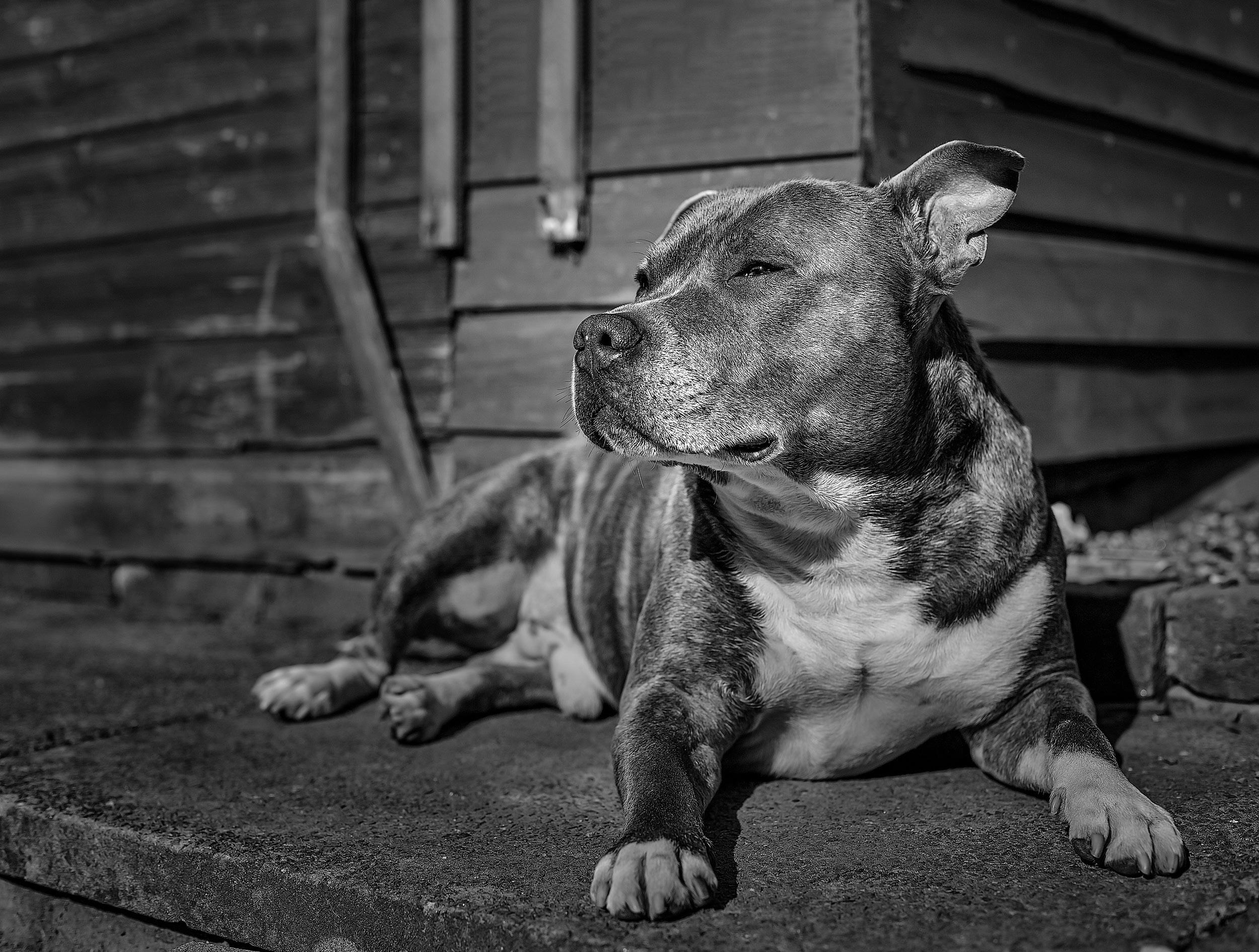
USE NATURAL LIGHT
The best dog portraits are often taken in natural light. Avoid using flash as it can startle the dog and create red-eye or harsh shadows. Try to schedule your photo session during the golden hours - early in the morning or late in the afternoon – when the light is soft and warm. Overcast days are also perfect for photography as the clouds act as a natural diffuser, spreading the light evenly and reducing shadows.
GET DOWN ON THEIR LEVEL
To capture the world from a dog's perspective, you need to get down to their level. This means kneeling or lying on the ground. Photos taken at your dog's eye level create a more engaging portrait, allowing you to capture those expressive eyes and distinct facial features.
DQ | 8C 28
2 three DOGS AT HOME

FOCUS ON THE EYES
The eyes are often said to be the window to the soul, and this is true for dog portraits as well. Make sure the eyes are in sharp focus, as this will give your photo more emotional impact. If your camera has a portrait mode or an auto-eye focus feature, use it to keep the eyes sharp.
BE PATIENT
Patience is key when photographing dogs. Allow your dog to get used to the camera and equipment. Don't rush the process; give them time to relax. Sometimes, you'll capture the best shots when you least expect it—while they're yawning, stretching, or just looking up at you curiously.
DQ | 8C 29 DOGS AT HOME
FOUR 5
USE TREATS AND TOYS
Have some treats or their favourite toy on hand to grab their attention. This can help you direct their gaze or encourage them to sit still. You can also use toys to invoke a playful expression or an inquisitive tilt of the head.

CHOOSE A SIMPLE BACKGROUND
A simple, uncluttered background ensures that your dog is the focal point of the portrait. Natural settings work well, as do plain-coloured walls. If you're outdoors, use a shallow depth of field to blur the background and make your dog stand out.
DQ | 8C 30
DOGS AT HOME
7 six


EXPERIMENT WITH DIFFERENT ANGLES AND COMPOSITIONS
Try taking photos from different angles to find the most flattering and interesting compositions. Along with head-on shots, try capturing your dog from above or focus on details like paws or the texture of their fur. Use the rule of thirds by placing your dog off-centre, and don't be afraid to fill the frame with your dog's face for an intimate effect. Each angle tells a different story.
KEEP THE SESSION FUN
Keep the mood light and fun. If your dog enjoys the session, it will show in the photos. The goal is to capture your dog's unique personality, whether that's playful, majestic, or simply sweet.
DQ | 8C 31
DOGS AT HOME
9
EIGHT
ten
POST-PROCESSING
Finally, some basic editing can enhance your dog portraits. Adjust the brightness, contrast, and crop if necessary to highlight your dog's best features. Be careful not to over-edit, as the natural look often resonates more with viewers.
PRACTICE!
The more you practice, the better you'll become. Experiment with different techniques, settings, and concepts. Each dog is unique, and learning to capture their individuality is what makes canine portraiture so rewarding.

DQ | 8C 32
11 DOGS AT HOME

FINAL THOUGHTS
Capturing the perfect canine portrait takes practice and creativity, but by following these tips, you're well on your way to documenting unforgettable moments and expressions of your furry friend.
DQ | 8C 33
DOGS AT HOME

DQ | 8C 34 DOGS AT HOME
THE ESSENTIAL GUIDE TO
DOG JACKETS
FUNCTION, FASHION, AND FIT

With the weather cooling down across South Africa, we thought it was time to delve into the world of dogjackets. It’s important to remember that dog jackets are more than just a fashion statement—they're a functional necessity for many breeds, especially in colder weather conditions. Whether your dog is battling the cold, rain, or wind, a well-chosen jacket can make his outdoor experiences more comfortable and enjoyable. This article explores the importance of dog jackets, their different types, and how to choose the right one for your furry friend.
DQ | 8C 35 DOGS AT HOME

WHY DO DOGS NEED JACKETS?
Not all dogs are built for all weather conditions. While some breeds have thick, insulating fur that protects them against the cold, others, particularly those with short or thin coats, older dogs, puppies, and dogs with health issues, may need extra protection from the cold or damp. Here are the primary reasons dog jackets are needed:
• Warmth: Dogs with thin coats or low body fat, like Greyhounds or Whippets, can benefit significantly from the extra layer of insulation against the cold.
• Weather protection: For dogs that need to go out regardless of weather conditions, a jacket can protect against rain, snow, and wind.
• Safety: Many dog jackets have reflective features that enhance a dog's visibility during early morning or late evening walks.
• Comfort: A jacket can make the experience of going outside more pleasant for a dog, encouraging them to exercise even when the weather isn't ideal.
DQ | 8C 36 DOGS AT HOME
TYPES OF DOG JACKETS
Dog jackets come in various styles and materials, each suited to different needs and environments:
• Insulated jackets: These are designed to keep dogs warm in cold weather. They often have a filling similar to human winter jackets and are ideal for snowy and icy conditions.
• Rain jackets: Made from waterproof or water-resistant materials, rain jackets help keep your dog dry during rainy walks.
• Cooling jackets: In hot weather, cooling jackets can help keep dogs comfortable. These are usually made from special fabrics that you soak in water before use. As the water evaporates, it provides a cooling effect.
• Reflective or safety jackets: These jackets are made with reflective material that shines brightly under lights, ideal for nighttime safety.

DQ | 8C 37 DOGS AT HOME

CHOOSING THE RIGHT JACKET
Selecting the right jacket involves considering several factors to ensure comfort, ease of movement, and the correct level of protection:
• Size and fit: Measure your dog's length, neck, and chest. A wellfitting jacket should be snug but not tight, allowing full range of motion. Many manufacturers provide sizing charts.
• Material: Choose a material suited to your dog’s needs—insulated materials for cold weather,
breathable fabrics for mild weather, and waterproof materials for rain.
• Ease of use: Look for jackets that are easy to put on and take off. Jackets with Velcro, clips, poppers or zippers are generally easier to handle, especially if your dog is not used to wearing clothes.
• Durability: Opt for jackets that are well-made and durable, especially if your dog is active and spends a lot of time outdoors.
• Washability: Since dog jackets can get dirty, choosing one that is machine washable is practical.
DQ | 8C 38 DOGS AT HOME

WHEN NOT TO OPT FOR A JACKET
While dog jackets can be beneficial for keeping your furry friend warm and protected in cold or wet weather, there are certain situations when dogs should not wear jackets. Here’s when it’s advisable to skip the jacket:
1. Overheating risk: If the weather is mild or warm, wearing a jacket can cause a dog to overheat, particularly for breeds with thick coats designed to insulate them naturally. It's essential to assess the temperature and your dog's comfort level rather than dressing them based on human perceptions of cold.
2. Indoors: When inside a heated environment, dogs typically do not
need extra layers. Wearing a jacket indoors can lead to overheating and discomfort.
3. During high activity: If your dog is engaged in vigorous exercise or play, especially in moderate to warm weather, wearing a jacket may cause them to overheat. Active dogs generate a lot of body heat, and a jacket can prevent this heat from dissipating efficiently.
4. If the jacket is wet: If a dog’s jacket gets wet from rain and isn't dried properly before the next use, it can make the dog cold rather than keeping them warm, potentially leading to hypothermia in very cold weather.
DQ | 8C 39 DOGS AT HOME
5. If the dog is uncomfortable: Some dogs simply do not like wearing clothing. If a jacket seems to cause distress, restrict movement, or lead to behaviours like chewing at the jacket or acting anxious, it's best to reconsider its use. Comfort should always be a priority.
6. Poor fit: A jacket that does not fit correctly can chafe, restrict a dog’s movement, or even pose a safety hazard if it’s too loose. Make sure any jacket fits properly before deciding to use it regularly.
7. Allergic reactions: Some materials can irritate a dog’s skin. If you notice any signs of irritation, discomfort, or allergies, such as scratching, red skin, or fur loss under the jacket, discontinue its use.
8. Unattended dogs: If your dog is unsupervised, avoid leaving him in a jacket. Jackets can get caught and result in accidents, so dogs wearing clothing need supervision.

DQ | 8C 40
DOGS AT HOME

CONCLUSION
Choosing whether or not to put a jacket on your dog involves considering the specific needs of your dog, the weather conditions, and how your dog reacts to wearing clothing. Always monitor your dog’s behaviour while wearing a jacket and adjust your approach based on their needs and comfort.
Dog jackets are a practical addition to your pet's wardrobe, providing protection, comfort, and safety in various weather conditions. By considering your dog's specific needs and ensuring a proper fit, you can make outdoor adventures more enjoyable and comfortable for your pet. Whether for warmth, dryness, or visibility, a good dog jacket is an investment.
DQ | 8C 41
DOGS AT HOME

ACRAL LICK GRANULOMAS
CAUSES, SYMPTOMS, AND TREATMENT
DQ | 8C 42 DOG HEALTH
Acral lick granulomas, also known as acral lick dermatitis, are a common yet frustrating skin condition in dogs, characterised by chronic, self-inflicted wounds. These lesions occur when a dog persistently licks a small area of its body, typically the lower legs, leading to thickened, scarred skin that can become infected. This article provides an overview of acral lick granulomas, including their causes, symptoms, and treatment options.
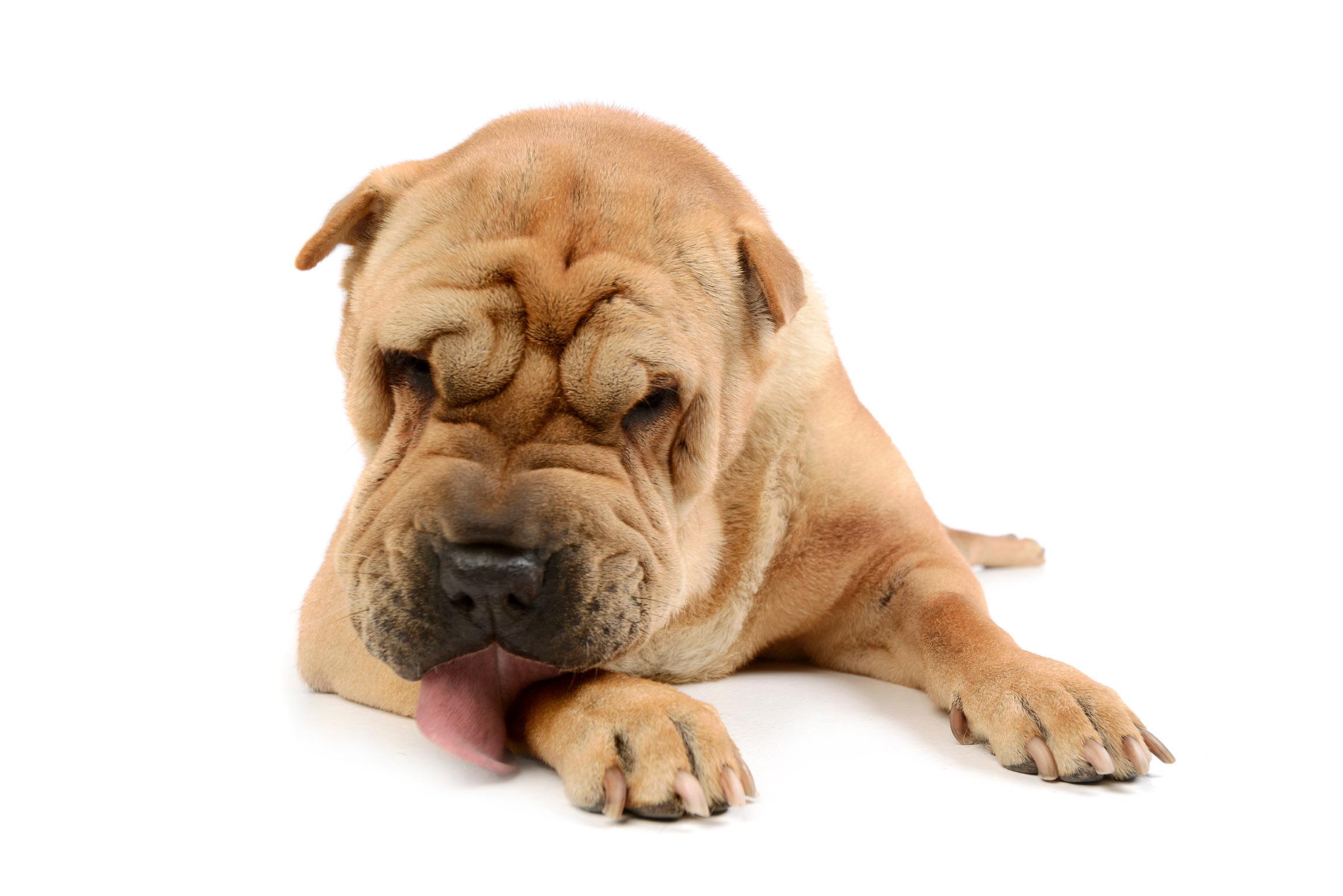
DQ | 8C 43 DOG HEALTH
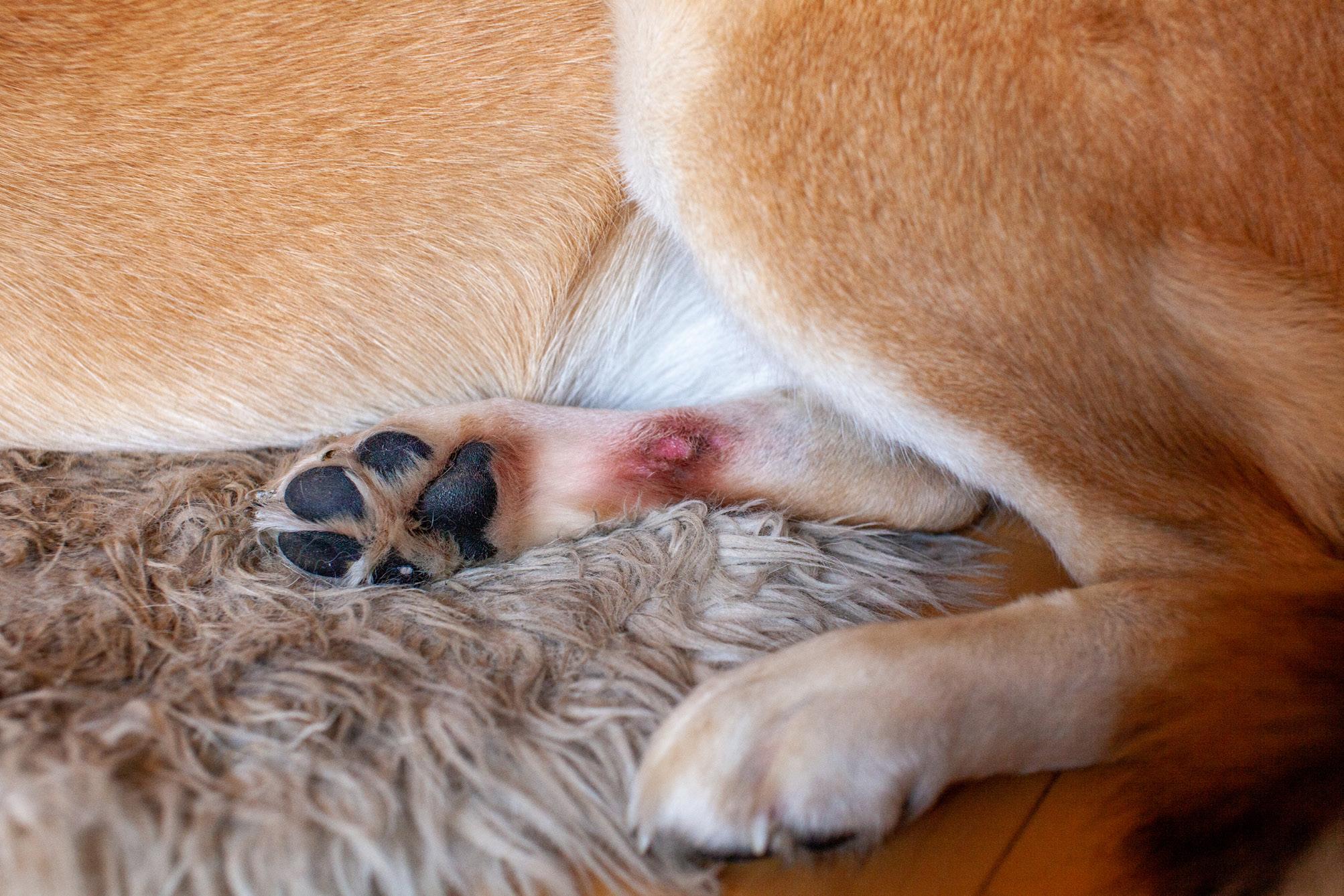
WHAT ARE ACRAL LICK GRANULOMAS?
Acral lick granulomas are a form of dermatitis where a dog repeatedly licks at a particular spot on its body, creating a well-defined, raised, and often ulcerated area. The term ‘acral’ refers to peripheral body parts, such as limbs, and ‘granuloma’ describes the type of inflammatory tissue that forms in response to chronic irritation.
DQ | 8C 44 DOG HEALTH

CAUSES OF ACRAL LICK GRANULOMAS
The exact cause of this condition can be complex and multifactorial, including:
• Behavioural issues: Boredom, anxiety, or compulsive behaviour can lead dogs to start licking excessively. Such behaviour is often seen in dogs with inadequate physical or mental stimulation.
• Allergies: Allergic reactions to food, environmental allergens, or contact irritants can cause itchiness and discomfort, prompting licking.
• Foreign bodies: A reaction to a foreign body, like a thorn or splinter, embedded in the skin can cause localised licking and granuloma formation.
DQ | 8C 45 DOG HEALTH

• Joint pain or discomfort: Underlying orthopaedic issues, such as arthritis, can lead dogs to lick at painful joints.
• Skin infections: Fungal or bacterial infections can make the skin itchy, leading to licking.
• Neuropathic pain: Some dogs may experience abnormal nerve sensations that cause them to lick specific areas.
DQ | 8C 46 DOG HEALTH

SYMPTOMS OF ACRAL LICK GRANULOMAS
Symptoms typically centre on a single area and include:
• Raised, thickened skin lesion: Often looks like a plaque or a bald patch that is reddened and may be oozing or bleeding.
• Persistent licking: Frequent licking at a specific spot on a leg or foot.
• Hair loss: At the site of the granuloma due to licking.
• Possible secondary infection: The lesion can become infected, producing pus or a foul smell.
DQ | 8C 47 DOG HEALTH
DIAGNOSING ACRAL LICK GRANULOMAS
Diagnosis typically involves:
• Veterinary examination: To assess the physical symptoms and possible underlying causes.
• Skin scrapings and cultures: To rule out infections.
• Biopsy: In some cases, to confirm the diagnosis and rule out other diseases like cancer.
• Radiographs or ultrasound: To check for underlying bone involvement.
TREATMENT OPTIONS
Treating acral lick granulomas can be challenging and often requires a multifaceted approach:
• Addressing underlying medical issues: Treatment may include antibiotics for infections or pain management for arthritis.
• Behavioural modification: Implementing environmental changes, including increasing exercise and mental stimulation to reduce boredom or anxiety.
• Topical treatments: Application of corticosteroids or other antiinflammatory medications to reduce itching and inflammation.
• Physical barriers: Using bandages or Elizabethan collars to prevent licking.
• Psychoactive medications: In cases of obsessive-compulsive behaviour, medications such as Selective Serotonin Reuptake Inhibitors (SSRIs) or Tricyclic Antidepressants (TCAs) might be prescribed.
DQ | 8C 48
DOG HEALTH
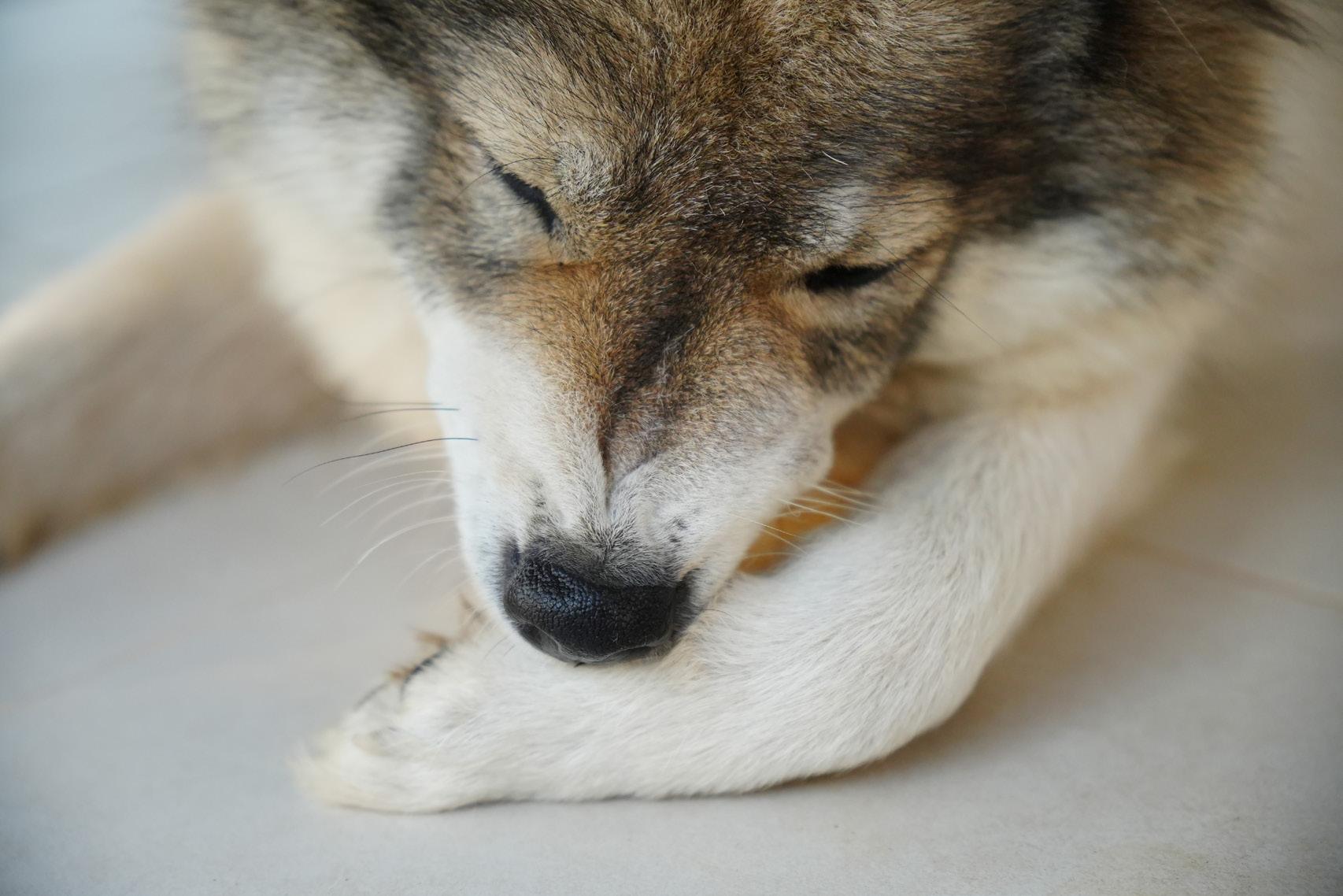
PREVENTION AND MANAGEMENT
Preventing acral lick granulomas involves:
• Ensuring that dogs receive adequate physical and mental stimulation.
• Promptly addressing any skin issues or injuries.
• Scheduling regular veterinary check-ups.
CONCLUSION
Acral lick granulomas are a complex issue requiring patience and persistence to manage. If you suspect your dog is developing this condition, it is crucial to consult a veterinarian as early as possible to explore the underlying causes and appropriate treatments. With the right approach, most dogs can achieve significant relief.
DQ | 8C 49
DOG HEALTH
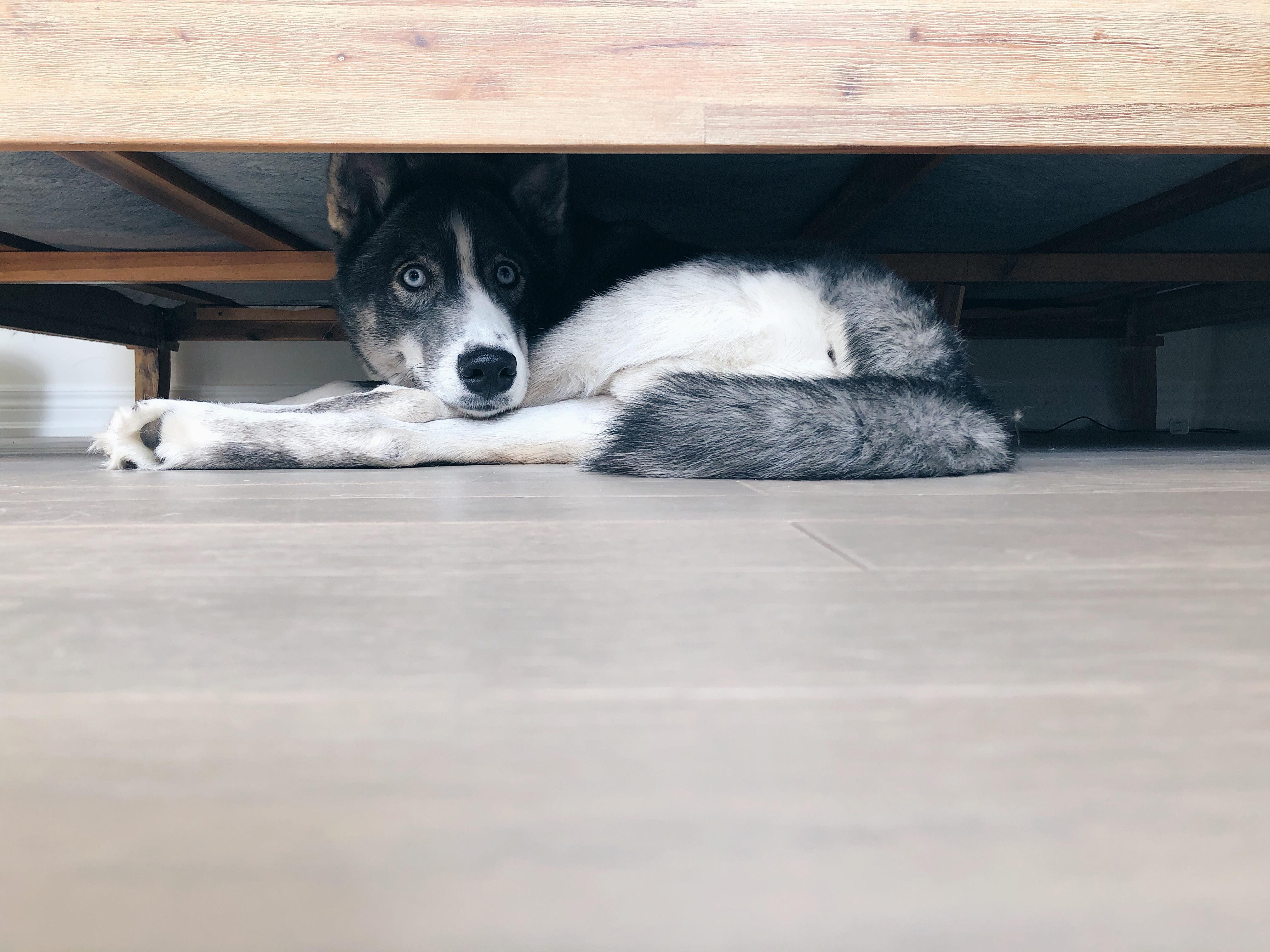
MANAGING ANXIETY
EFFECTIVE STRATEGIES FOR A CALMER CANINE
DQ | 8C 50 DOG BEHAVIOUR

Anxiety in dogs is a common concern for pet owners. Like humans, dogs experience anxiety that can affect their behaviour and quality of life. Understanding and addressing canine anxiety is crucial for fostering a happy, healthy, and harmonious home. Here we explore the signs of anxiety in dogs and offer practical tips for managing and alleviating these symptoms.
DQ | 8C 51 DOG BEHAVIOUR
RECOGNISING ANXIETY IN DOGS
Anxiety can manifest in various ways, both behavioural and physical, depending on the dog and the type of anxiety they are experiencing. Common signs include:
1. Excessive barking or howling: Dogs may bark or howl excessively when left alone or when feeling anxious about their environment.
2. Pacing or restlessness: An anxious dog might pace around the house or seem unable to settle down, often moving in repetitive patterns.
3. Shivering or trembling: This can occur in the absence of cold temperatures and is typically related to fear or nervousness.
4. Destructive behaviour: Chewing, digging, or destroying furniture can be a sign of anxiety, especially if it occurs when they are left alone (a symptom of separation anxiety).

5. Excessive licking or chewing: Dogs may lick or chew their paws excessively as a self-soothing behaviour when anxious.
6. Avoidance or hiding: An anxious dog might try to hide or escape from situations where they feel stressed.
DQ | 8C 52 DOG BEHAVIOUR

9. Panting: Excessive panting, when it's not warm, is a common sign of stress or anxiety.
7. Changes in eyes and ears: Dogs might display dilated pupils or flatten their ears against their head when feeling anxious.
8. Changes in body posture: Lowered body posture or tucking the tail between the legs can indicate anxiety or fear.
10. Loss of appetite: Anxiety can cause some dogs to lose their appetite or refuse to eat.
11. Urinating or defaecating indoors: Dogs who are otherwise house-trained may have accidents indoors when they are experiencing anxiety.
DQ | 8C 53 DOG BEHAVIOUR

TYPES OF CANINE ANXIETY
Understanding the type of anxiety your dog is experiencing can guide effective interventions:
1. Separation anxiety: Distress and behaviour problems when separated from their owners or pet siblings or when left alone.
2. Fear-related anxiety: Caused by loud noises, strange people or animals, new environments, or specific situations like the vet's office.
3. Age-related anxiety: Affects older dogs and can be associated with cognitive dysfunction syndrome (CDS).
DQ | 8C 54 DOG BEHAVIOUR
CAUSES OF ANXIETY
Anxiety in dogs can be caused by a variety of factors, ranging from environmental influences to genetics. Understanding these causes is crucial for effectively managing and treating anxiety in dogs. Here are some of the most common causes of anxiety in dogs:
1. Genetics: Just like humans, some dogs are genetically predisposed to anxiety and may be more susceptible due to their breed or family history. Breeds known for their high-strung or sensitive nature, such as Border Collies, Labrador Retrievers, and German Shepherds, can be more prone to developing anxiety disorders.

DQ | 8C 55 DOG BEHAVIOUR
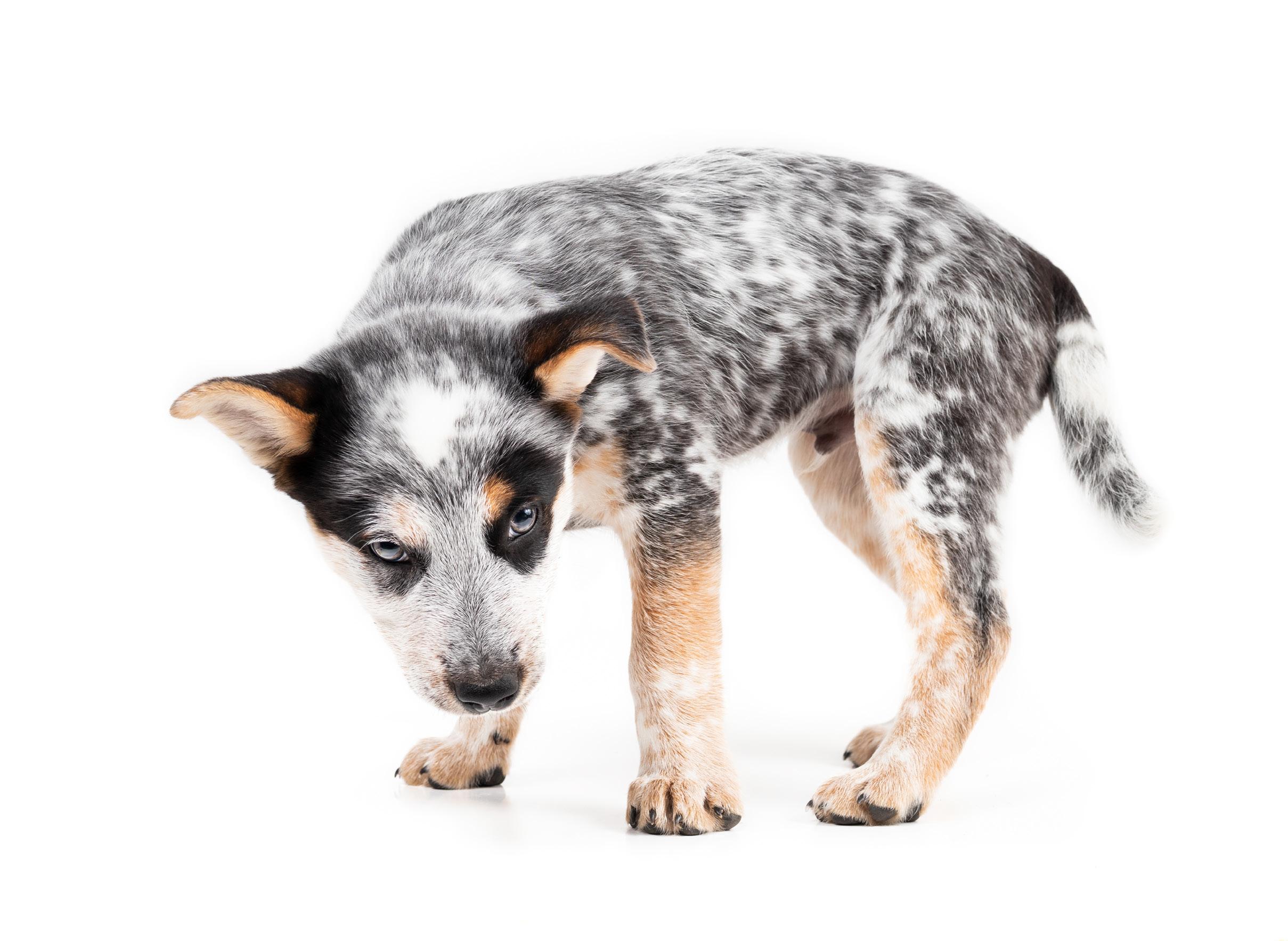
2. Lack of socialisation: Dogs that haven't been adequately socialised during their critical period of socialisation (typically between three and 14 weeks of age) may develop fearfulness or anxiety. This can include fear of unfamiliar people, animals, and environments.
3. Traumatic experiences: Past trauma, such as abuse, abandonment, or a particularly frightening event, can lead to lasting anxiety. This could manifest anytime the dog is reminded of these past events, even in seemingly unrelated situations.
DQ | 8C 56 DOG BEHAVIOUR


4. Change in environment or routine: Dogs thrive on consistency, and sudden changes in their environment or daily routine can induce stress and anxiety. This includes moving to a new home, changes in the family dynamic like the addition or loss of a family member, or even changes in work schedules.
8. Illness or physical pain: Sometimes, anxiety might be linked to an underlying physical health problem. Pain, sensory decline (such as hearing or vision loss), or neurological disorders can cause a dog to behave anxiously.
DQ | 8C 57 DOG BEHAVIOUR

MANAGEMENT AND TREATMENT
1. Create a safe space
Provide a safe, comfortable space where your dog can retreat when they feel stressed. This could be a quiet corner with a cosy bed and some favourite toys.
2. Consistent routine Dogs thrive on routine as it gives them a sense of security. Keep a consistent schedule for feeding, walks, and bedtime to help reduce anxiety.
DQ | 8C 58 DOG BEHAVIOUR
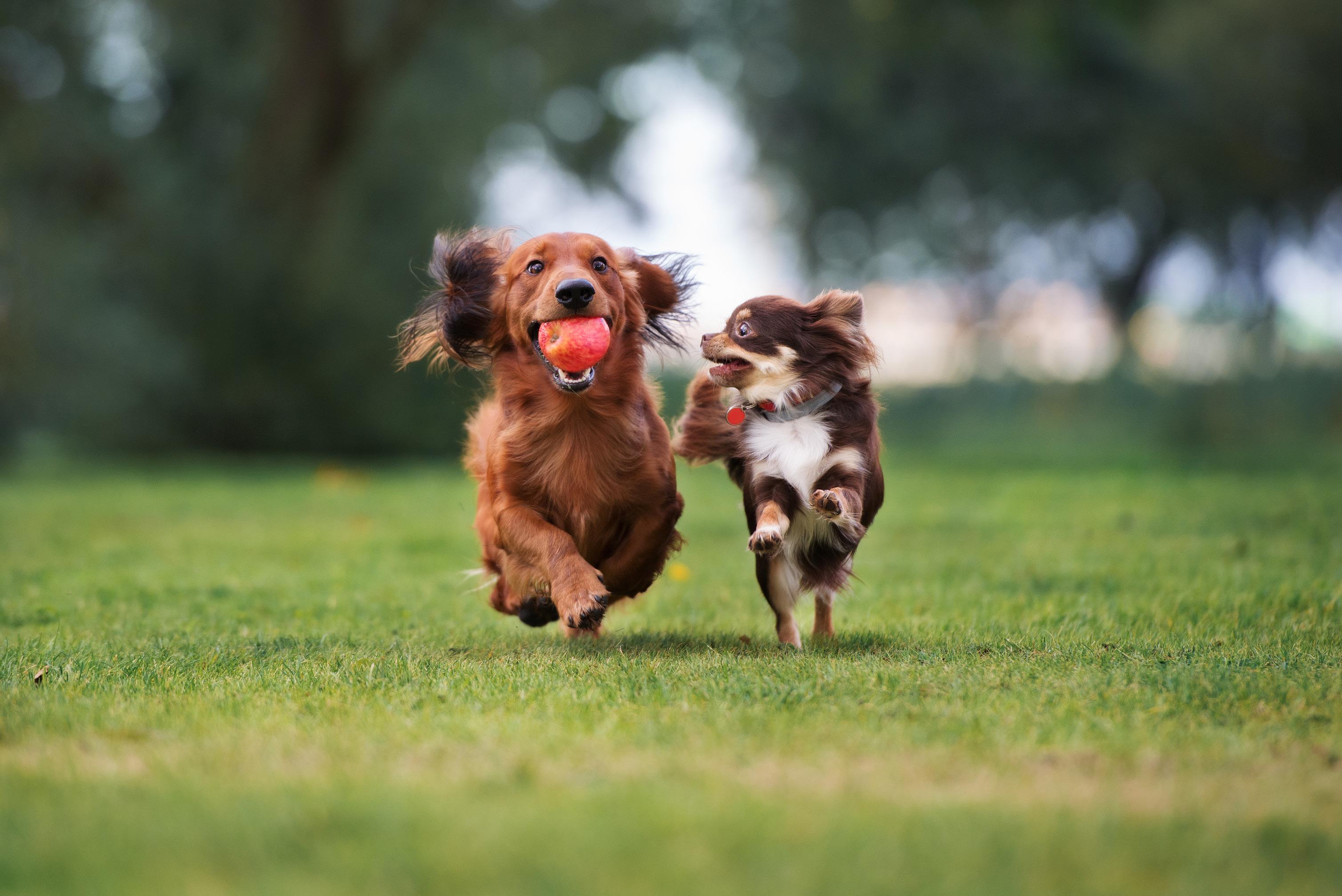
providing mental stimulation. Aim for activities that suit your dog’s breed, age, and physical condition.
4. Training and socialisation
Positive reinforcement training can help boost a dog’s confidence. Teach them basic commands and expose them to new environments and people gradually to increase their comfort level.
Consider using products designed to reduce anxiety, such as:
• Calming treats and diets that contain ingredients like L-theanine and casein.
• Anxiety wraps that apply gentle pressure to a dog’s torso.
• Pheromone diffusers, sprays, or collars that mimic the pheromone mother dogs produce to calm their puppies.
DQ | 8C 59 DOG BEHAVIOUR

6. Counterconditioning
This technique is particularly effective for fear-related anxieties. It involves exposing your dog gradually to the source of their anxiety and rewarding them for calm behaviour in the presence of the anxiety trigger i.e. conditioning them to expect good things in the presence of the stressor.
7. Professional help
If your dog’s anxiety is severe or does not improve with basic interventions, consult a veterinarian or a professional dog behaviourist. They can offer guidance and, if necessary, prescribe medications to help manage anxiety.
DQ | 8C 60 DOG BEHAVIOUR

CONCLUSION
Managing anxiety in dogs requires patience, understanding, and a proactive approach. By recognising the signs of anxiety early and implementing effective management strategies, you can help your canine companion lead a more relaxed and enjoyable life. Remember, every
dog is different, and what works for one might not work for another. Tailor your approach to fit your dog’s specific needs and always consult with professionals when needed. Through compassion and care, you can make a significant difference in managing your dog's anxiety.
DQ | 8C 61 DOG BEHAVIOUR
DIY DOG GROOMING
MASTERING THE ART OF CLIPPING YOUR DOG AT HOME
Grooming your dog is not just about keeping them looking good – it's also essential for their health and well-being. While many owners opt for professional groomers, learning to clip your dog at home can be a rewarding experience, offering a great way to bond with your pet and save money. Here’s a comprehensive guide on how to safely and effectively clip your dog, ensuring a pleasant experience for both you and your furry friend.
WHY CLIP YOUR DOG?
Regular clipping is crucial for maintaining your dog’s coat, skin health, and overall comfort. It helps prevent matting, reduces shedding, and can keep your dog cooler during warm months. Moreover, regular grooming sessions are an excellent opportunity to check for any signs of skin issues, lumps, or parasites.

DQ | 8C 62 DOG GROOMING

DQ | 8C 63 DOG GROOMING

WHAT YOU’LL NEED
• Dog clippers: Invest in a highquality pair of clippers designed for dogs. These are specifically made to handle the thickness and type of canine fur.
• Variety of blades and guards: Different coats require different blades and guards, so make sure you have the right tools for your dog’s specific coat type.
• Grooming scissors: For trimming around sensitive areas like the face, ears, and paws.
• Brush and comb: To detangle the coat before clipping.
• Dog shampoo and conditioner: For bathing your dog before the clipping session.
• Towels: For drying your dog preclip.
• Styptic powder: To stop bleeding in case you accidentally nick your dog.
• Treats: To reward your dog and make the experience positive.
DQ | 8C 64 DOG GROOMING
PREPARING YOUR DOG
1. Bathing: Always start with a clean dog. Bathe your dog using suitable shampoo and conditioner, then dry thoroughly.
2. Brushing: Detangle your dog’s coat with a brush or comb. This makes clipping easier and more comfortable for your dog.
3. Comfort: Ensure your dog is comfortable and relaxed. Choose a quiet, familiar place for grooming and keep the atmosphere calm.


CLIPPING TECHNIQUES
Let your dog get used to the sound and vibration of the clippers before you begin. Hold the clippers against the body without moving them to acclimate
Go with the grain: Clip in the direction of hair growth to prevent irritation and achieve a smoother
Use a light hand, and don’t press the clippers too hard against the skin. Be extra cautious around the face, ears, and paws. Use grooming scissors for any areas that are too tight for
Give your dog (and yourself) short breaks during the session to prevent anxiety and keep the experience positive.
DQ | 8C 65 DOG GROOMING
CLIPPER MAINTENANCE
Caring for dog clippers properly is crucial to ensure they continue to work effectively and safely for grooming your pet. Good maintenance prevents pulling and snagging of the fur and extends the life of your clippers. Here are some key steps to keep your dog clippers in top condition:
1. Clean regularly
After each use, it's important to clean your clippers. Remove hair and debris from the blades and body using a soft brush (usually provided with the clippers). For a more thorough clean:
• Use a toothbrush or small brush to clean out hair trapped between the blades.
• If the blades are detachable, remove them and use the brush to clean the area underneath.
2. Lubricate the blades Clippers should be oiled before and after each grooming session to keep them running smoothly and to prevent the blades from dulling:
• Place a few drops of clipper oil (specifically designed for this purpose) on the blade's edges where they meet the clipper body.
• Turn on the clippers for a few seconds to allow the oil to distribute evenly.

3. Check for damage
Regularly inspect your clippers for any signs of wear or damage:
• Look for nicks or dullness in the blades which can pull hair and cause discomfort to your dog.
• Ensure that the power cord (if applicable) is intact and not fraying.
• Check for any loose screws or parts that may need tightening or replacing.
4. Store properly
When not in use, store your clippers in a dry place to prevent rust and corrosion:
• A case or a sturdy container will protect them from physical damage and keep them away from dust.
• Avoid storing them in bathrooms or other humid areas.
DQ | 8C 66 DOG GROOMING
5. Avoid overheating
Clippers can get hot during use, which can burn your dog’s skin:
• Turn off the clippers periodically during prolonged grooming sessions to let them cool down.
• You can also use a product like clipper coolant spray to quickly reduce heat and lubricate the blades.
6.
Sharpen the blades
Depending on how frequently you use the clippers, the blades may need to be sharpened:
• Professional sharpening is recommended because the alignment and sharpness are crucial for effective cutting.
• Consider having a second set of blades so that you can continue grooming while the other set is being sharpened.

7. Replace blades when necessary
Even with good care, blades will eventually wear out:
• Replace blades that are too dull or damaged to be sharpened, as they can pull hair painfully and cut inefficiently.
Proper maintenance not only prolongs the life of your dog clippers but also ensures a safer and more comfortable grooming experience for your dog. By following these care tips, you can keep your grooming sessions smooth and efficient, reducing stress for both you and your pet.
DQ | 8C 67 DOG GROOMING
AFTERCARE
1. Check the skin: Look for any signs of irritation or missed spots. Apply a dog-safe moisturiser if the skin looks dry.
2. Clean the equipment: Clean and oil your clippers and scissors after each use to keep them in good condition.
3. Reward: Always end the grooming session with plenty of praise and a few treats to help your dog associate grooming with positive outcomes.

STYLES OF CLIP
There are various clip styles for dogs, tailored to the specific breed, coat type, and owner preferences. These styles not only help dogs stay cool and clean but can also highlight their natural body lines and features, fulfilling both functional and aesthetic needs. Here’s a look at some popular clip styles across different dog breeds:
1. Poodle clips
Poodles have a variety of clip styles due to their unique, curly coats:
• Puppy clip: A simple, all-over
short trim suitable for all ages but traditionally done on puppies up to a year old.
• Lamb clip: The body is clipped short, with longer fur left on the legs, resembling a lamb’s wool.
• Continental clip: Often seen in show Poodles; the face, throat, feet, and part of the tail are shaved, with pom-poms left on the hips and legs.
• Kennel clip: A practical, lowmaintenance clip with a uniform length all over the body.
DQ | 8C 68
GROOMING
DOG

4. West Highland Terrier clip
Westies typically have:
Short hair on the body with a fuller face to maintain their characteristic round head shape.
2. Schnauzer clip
The traditional Schnauzer cut includes:
• Body: Short hair on the back and sides, with longer hair left on the legs.
• Facial styling: Distinctive ‘beard’ and eyebrows are left longer to highlight the breed's typical expression.
3. Cocker Spaniel clip
Typical for both American and English Cocker Spaniels, this style:
• Keeps fur on the body short, while the hair on the ears, chest, belly, and legs is left longer and wellblended.
5. Yorkshire Terrier clips
Yorkies can sport different styles:
• Puppy cut: A practical, short, and even length all over the body.
• Show cut: Maintains long, flowing hair, which requires extensive grooming.
6. Shih Tzu clips
Popular styles for Shih Tzus include:
• Teddy bear cut: Features a rounded face trim that gives the appearance of a stuffed teddy bear.
• Puppy cut: Similar to the Yorkie - a simple and even short length all over to reduce grooming needs.
DQ | 8C 69 DOG GROOMING

CHOOSING THE RIGHT STYLE
When choosing a clip style for your dog:
• Consider the climate: Shorter cuts can help keep dogs cool in hot climates, while longer coats provide insulation in colder areas.
• Think About maintenance: Some styles require more grooming than others. Owners should consider their ability and willingness to maintain elaborate styles.
• Consult professionals: A professional groomer or breeder can offer advice based on your dog's coat type, condition, and lifestyle.
CONCLUSION
Clipping your dog at home is a cost-effective way to keep them neat and healthy. It requires patience and practice, but with the right tools and techniques, it can become an enjoyable activity for you and your pet. Remember to always proceed slowly and keep your dog’s comfort in mind to make grooming a stress-free experience for both of you.
DQ | 8C 70
DOG GROOMING


DID YOU KNOW?
Dogs have three eyelids!
In addition to the upper and lower eyelids, dogs have a third eyelid called the ‘nictitating membrane’ or ‘haw.’ This membrane is located in the inner corner of the eye and serves several important functions. It helps protect the eye from debris and injuries, produces tears to keep the eye moist, and can also help spread tears across the surface of the eye to keep it lubricated. This extra eyelid is one of the many unique adaptations that help keep dogs' eyes healthy and functional.
DQ | 8C 71 FOCUS
YOUR DOG QUESTIONS ANSWERED
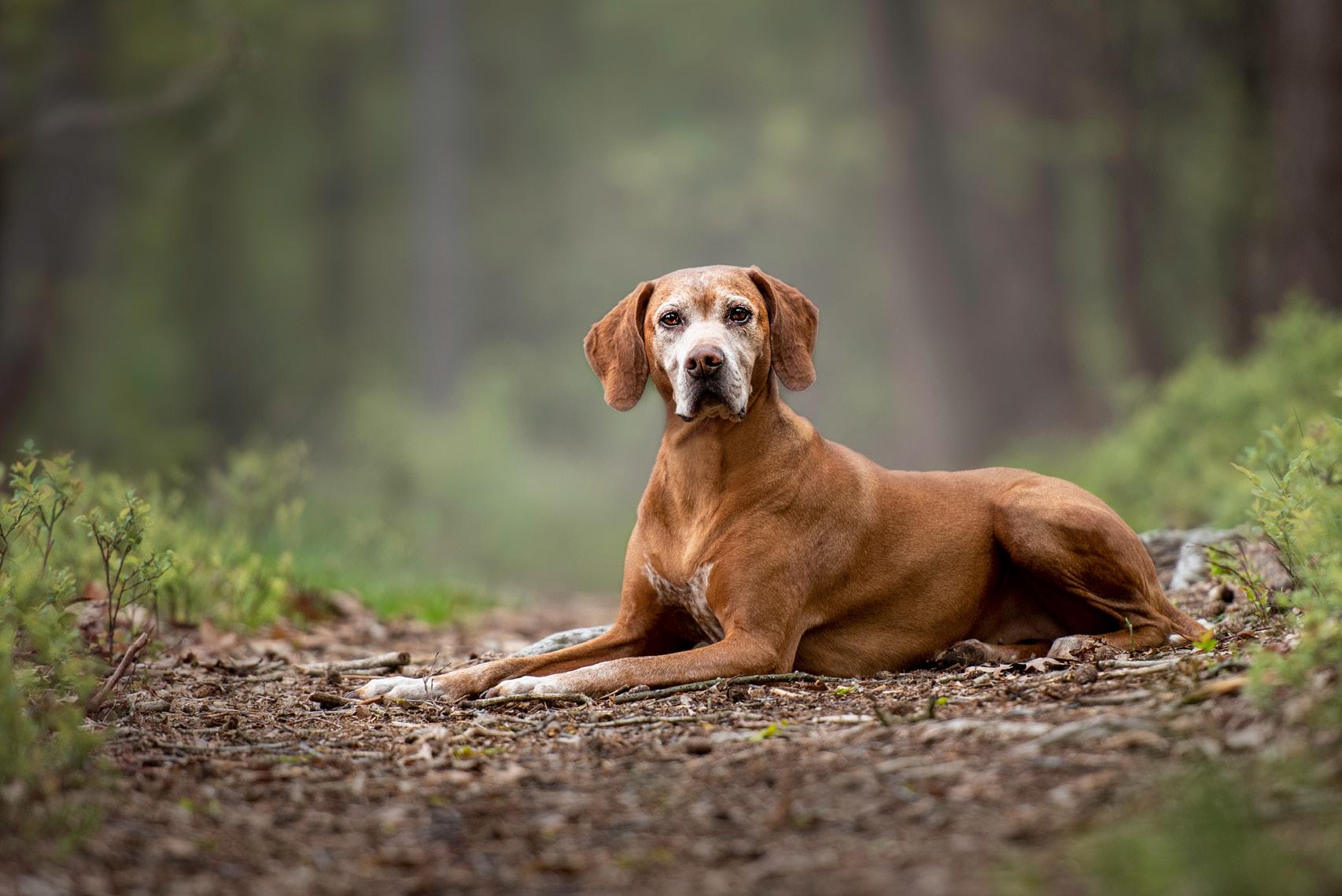
When do dogs start to go grey?
Dogs typically start to show signs of going grey around the muzzle, face, and head as they age, similar to how humans develop grey hair. The onset of greying in dogs can vary widely depending on several factors, including:
1. Breed: Some breeds tend to go grey earlier than others. Larger breeds, for example, may start to show grey hairs around the age of five or six, while smaller breeds might not start greying until they are seven or eight.
Just as in humans, genetics play a significant role in how early and extensively a dog might go grey.
3. Health and stress: Dogs that have experienced high levels of stress or health issues might start to grey earlier than healthier or less stressed dogs.
Typically, the greying process begins when a dog is considered to be entering its senior years. This aging marker can be an aesthetic change that doesn’t necessarily indicate any serious health issues. However, if a young dog starts to grey prematurely, especially before the age of two, it might be a good idea to consult a vet to rule out any underlying health concerns or stress factors.
DQ | 8C 72 ?
Do small dogs know they are small?
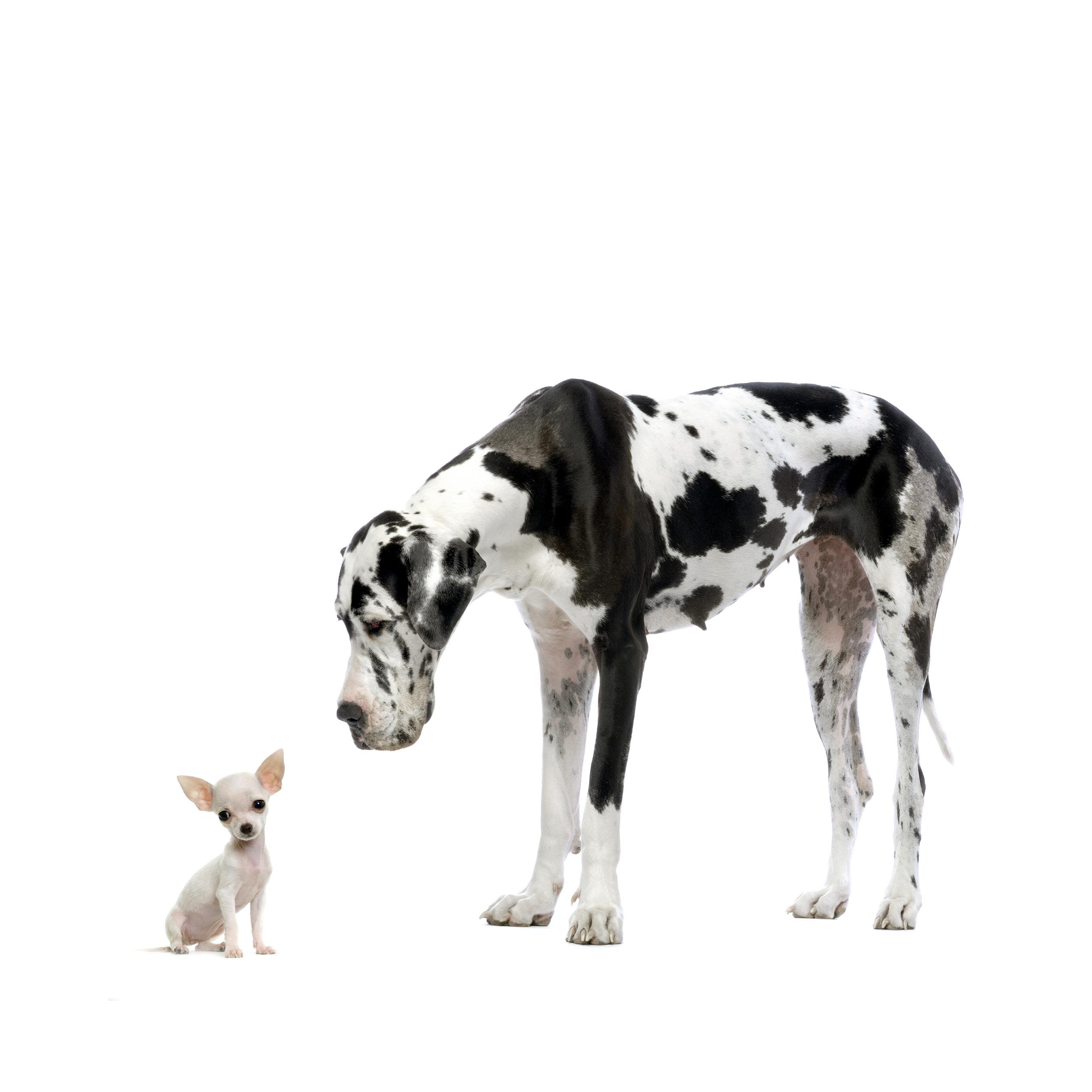
Dogs, regardless of size, primarily rely on their senses and experiences to navigate the world. Their awareness of their own size is more about their interactions with other dogs, animals, and their environment rather than a conscious knowledge of being ‘small’ or ‘large.’
Here are a few points to consider:
1. Social interactions: Small dogs often behave differently around larger dogs. They may display more cautious behaviour, use defensive strategies, or rely on humans for protection. Conversely, some small dogs may exhibit ‘small dog syndrome,’ where they overcompensate for their size with aggressive or bold behaviour.
2. Experience and learning: Dogs learn from their experiences. A small dog that has
been around larger dogs or animals might understand the need to be more careful. This learning process doesn't mean the dog is aware of his small size in a human sense, but he adapts based on his experiences.
3. Instincts and behaviour: Instinctual behaviours also play a role. Smaller animals in the wild often have survival strategies that include hiding, being more alert, and avoiding larger predators. These instincts can carry over to domesticated dogs.
4. Human interaction: Dogs are sensitive to how humans treat them. If a small dog is frequently picked up, carried, or protected, it might develop an understanding of its vulnerability or need for extra care.
While dogs might not have a cognitive understanding of their size, their behaviour and interactions suggest they have a practical awareness of it.
DQ | 8C 73 Q&A
Products we love
Shopping fun
PaleoPet Pure 100% Green Beef Tripe for Dogs
Humans may find tripe to be somewhat of an acquired taste (and smell), but dogs absolutely love it! Our tripe has been thoroughly washed and cleaned for you, while retaining all the nutrition of unbleached tripe. It’s easy to serve and store and has so many health benefits for adult and senior dogs especially.

to no carbohydrate, moderate protein and high fat. Tripe can also entice dogs who may not feel all that well and are reticent to eat.
Our 100% Green Beef Tripe (and nothing else) is made from the best quality local beef with no preservatives, colourants or artificial flavourants.
Tripe is rich in trace minerals, while moderate in protein and fat. It is a great complementary raw food addition to a diet for dogs who may struggle with constipation or need foods that are easier to digest. Tripe doesn’t contain any bone, but still maintains a perfect calcium phosphorus balance, which is rare for animal protein without bone content.
Tripe can be used as a basis for a ketogenic diet for dogs with cancer or epilepsy where one should feed low
The PaleoPet Pure range is FSA Food Safety certified and DALRRD registered. Also available in convenient, pre-frozen 1,5 Kg and 750g tubs or as a box of 12 individually wrapped 100g Patties. The tubs are reusable, recyclable and PBA-free.
Products can be purchased online at www.paleopetpure.com and delivered to your door or bought at selected retailers.
DQ | 8C 74
follow us on Instagram @dogquarterlymag and Facebook dqmagazine
stay tuned for the next issue of
DQ | 8C 76 WWW.DQMAGAZINE.CO.ZA Next magazine issue of available 15 June 2024

